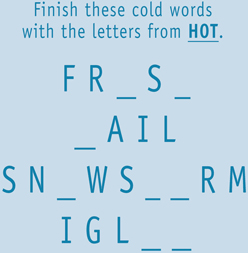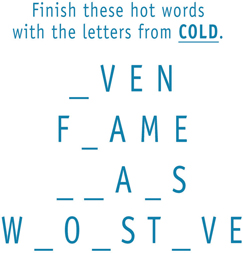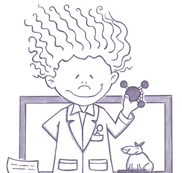Everything Kids' Magical Science Experiments Book (3 page)
Read Everything Kids' Magical Science Experiments Book Online
Authors: Tim Robinson
Tags: #epub, ebook

Repeat this experiment with other pairs of liquids. Think about some of these questions as you perform your experiment:
a.
Which pairs of liquids mixed together and which ones did not?
b.
What does this tell you about the densities of these pairs of liquids?
c.
Did you find any other liquids that changed positions like the water did?
d.
What characteristics do those liquids share that makes them do this?
Heating and cooling air can produce results that look like magic. But you don't have to be a magician to perform this experiment. You just need to heat and cool a container of air.
Question: How do you make a bottle collapse?
- Empty 500-mL plastic bottle
- Tap water
- Frying pan Stove
- Adult to assist
- Fill the plastic bottle about ¼ full with tap water.
- Fill the frying pan with about a half inch of water and turn on the burner.
- Place the plastic bottle in the frying pan to heat up the water inside. Have your adult helper watch to make sure the plastic bottle does not begin to melt.
- When you see steam escaping from the top of your bottle, have your adult helper place the lid tightly on the top of the bottle and remove it from the pan.
- Place the sealed bottle on the counter and turn off the stove.
- As the bottle cools, watch to see it collapse on itself.
As you may have learned in the previous experiment, air expands when it is heated. The air in the plastic bottle was heated up on the stove. When you capped it, you prevented any air from entering or escaping the bottle. As it cooled, the air inside the bottle contracted, or took up less space. Plastic is soft enough that the bottle had to collapse to account for the reduced space taken up by the air.

“Put your hand on a hot stove for a minute, and it seems like an hour. Sit with a pretty girl for an hour, and it seems like a minute. That's relativity.”
â
Albert Einstein
You can try this experiment with metal cans, also, but only certain kinds. What must you be able to do to the cans in order for this experiment to work?


You must be able to seal the top of the can in order for this to work. For example, an empty soda can probably won't work well, as it is very difficult to seal it once it has been opened. Any can or bottle with a screw-top lid should work.

“True science teaches us to doubt.”
â
Claude Bernard, French physiologist

Can you make cold from hot and hot from cold? Try it and see!

Question: Can a string cut ice?
KIDS' LAB LESSONS

You've already seen how a string can be used to lift a piece of ice, through the use of salt. Now you will get to “cut” through a piece of ice using only a piece of wire or string. This experiment uses gravity and time to produce the desired effects, and may take both practice and patience. But when you pull off this feat of skill, and can explain it to those around you, all your hard work will have been worth it.
Ice is frozen water. By itself, it tends to stay frozen, unless, of course, it is subjected to heat. But other things can cause ice to meltâpressure, for example. One theory is that ice skates operate on this principle. This theory claims that the pressure of the thin blades of the skates on the surface of the ice cause a tiny layer of the ice to melt, and the skates actually move on that thin layer of water. After the skate passes, the ice refreezes. This experiment uses pressure of a string to melt a piece of ice, move through that melted portion, and allow the ice to refreeze behind it. In so doing, the string can move its way through the ice, as if it were cutting it.
- Several ice cubes from the freezer, the larger, the better
- 1 empty glass bottle with a cork in its mouth
- 1 piece of copper wire, approximately 10â³â12â³ in length
- 1 piece of string, approximately 10â³â12â³ in length
- 2 hammers or other similar weights
- Remove an ice cube from the freezer and balance it on top of the cork.
- Tie one hammer to each end of the copper wire and carefully hang the wire across the top of the ice cube.
- Over time, the wire should begin to pass through the ice until it finally passes through completely.
- What do you think caused the wire to pass through the ice?


- Why did the ice melt above the wire as it passed through?


- What role did the hammers play in this experiment?


- What might have happened if you had used a different material than the copper wire? Try this experiment again using the string.


- What might have changed in this experiment had you used a plastic bottle instead of one made from another material? Try this experiment again using a plastic bottle or an aluminum can.

